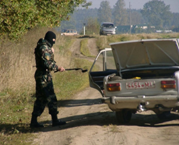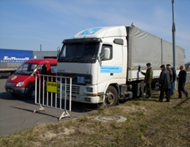“Nuclear security” is a broad term encompassing various activities to prevent nuclear terrorism (see here). If the protection of nuclear facilities is regarded as the first line of defense, “prevention of illicit trafficking of nuclear and radioactive materials” is, as it were, the second line of defense, which includes detection of and response to nuclear and other radioactive materials falling outside regulatory control. Given the growing movement of population and goods across international borders, prevention of illicit trafficking is one of the key areas in strengthening nuclear security.
According to the Incident and Trafficking Database (ITDB) of the IAEA, there were 2,331 cases of illicit trafficking of nuclear and radioactive materials from 1993 through 2012 (160 cases in 2012). Several attempts at illicit trafficking in highly enriched uranium were intercepted in the former Soviet and East European countries, and the region is therefore regarded as one of the most vulnerable in terms of nuclear smuggling.
«Effective Border Control»
More and more countries have been strengthening radiation monitoring systems at state border crossings, particularly since 9/11. Some have installed radiation detection portal monitors for freight, passengers, and vehicles at border checkpoints, while others have trained border guard officers to respond effectively to radiation incidents. Since officers stationed at the border frontline are usually not radiation specialists, detection devices should be simple and easy enough to use (specialized devices and technology for border monitoring are developed these days). It is also important to establish a coordination mechanism to provide timely expert support to frontline officers.
 |
 |
| Detection activities at various border sites | |